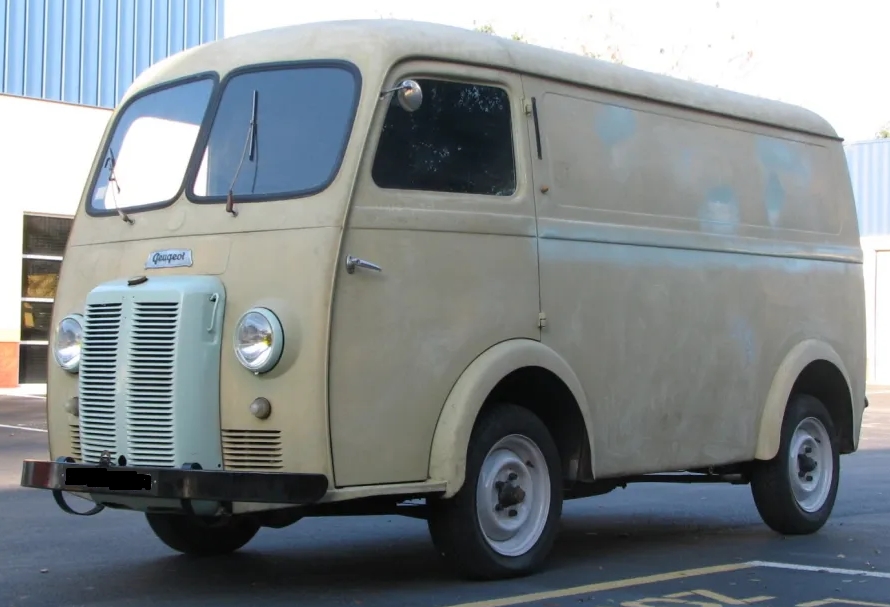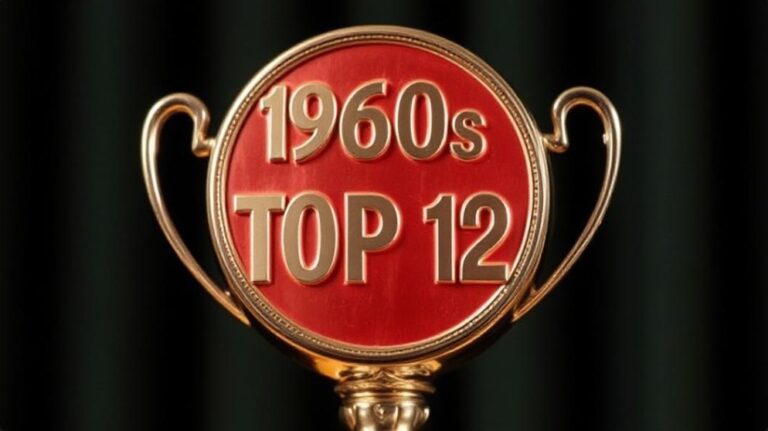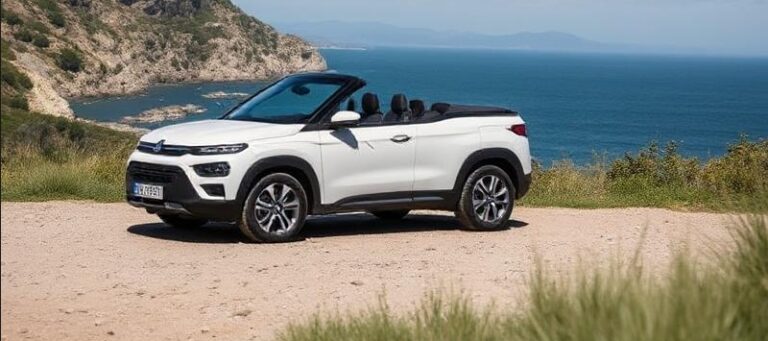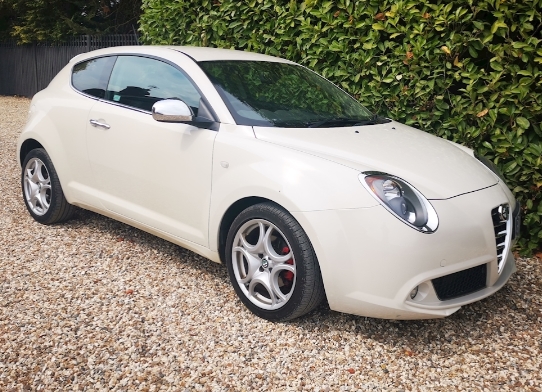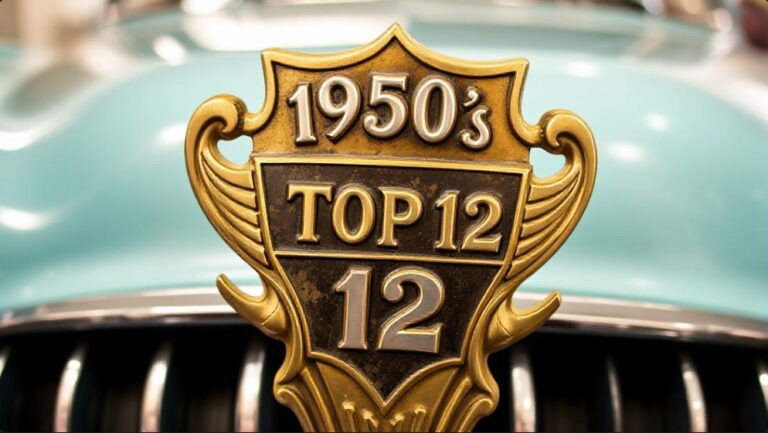The Enduring Legacy of the ‘Nez de Cochon’: The Complete Evolution of the (Citroën) Peugeot D3 and D4 Van
In the pantheon of classic French commercial vehicles, two titans dominate the collective memory: the corrugated, utilitarian form of the Citroën H Van and the charmingly pugnacious shape of the “Nez de Cochon,” or “Pig’s Nose.” While the H Van is correctly attributed to Citroën, a common point of confusion often places its main rival, the D3 and D4 series, under the same double-chevron badge. In reality, this iconic workhorse was a product of Peugeot, a vehicle whose story is one of innovation, corporate acquisition, and relentless evolution that powered France’s post-war recovery.
This is the detailed history of the Peugeot D3 and its successor, the D4—a van that, despite its humble origins, became an indelible part of the French landscape for nearly two decades.
The Genesis: Chenard & Walcker (1946-1950)
The story of the “Pig’s Nose” does not begin with Peugeot. It starts with one of France’s oldest and once-prestigious automakers, Chenard & Walcker. Facing the immense challenge of post-war reconstruction, France needed simple, robust, and efficient commercial vehicles. In 1946, Chenard & Walcker unveiled their answer: the Chenard & Walcker CHV.
Designed by engineer Jean-Albert Grégoire, the CHV was remarkably forward-thinking for its time. It featured a front-wheel-drive layout, a concept still novel for commercial vehicles, which allowed for an exceptionally low, flat, and unobstructed cargo floor. This “walk-through” design, combined with its forward-control cabin (placing the driver over the front axle), maximized cargo space within a compact footprint.
Its most defining feature, however, was the prominent, protruding snout that housed the engine ahead of the front axle. This design choice, made for packaging and access, would earn it its famous nickname. The initial engine was a tiny, air-cooled, two-cylinder, two-stroke flat-twin engine of just 720cc, producing a meager 26 horsepower. This powerplant was sourced from another manufacturer, Chausson. Underpowered and somewhat fragile, it was the vehicle’s Achilles’ heel.
Despite its brilliant packaging, Chenard & Walcker was in dire financial straits. The company lacked the resources for mass production and development. By the late 1940s, it had formed a technical and commercial alliance with Peugeot. This partnership would soon become a lifeline for the CHV design and a strategic acquisition for the Sochaux-based lion.
The Lion Takes Over: The Peugeot D3 (1950–1955)
In 1950, Peugeot fully absorbed Chenard & Walcker’s automotive division. Recognizing the immense potential of the CHV’s modern chassis and body, Peugeot saw an opportunity to enter the light commercial market with a ready-made product. They promptly discontinued the problematic two-stroke engine and rebranded the van as the Peugeot D3.
Model: Peugeot D3A (1950–1955)
The first Peugeot version was designated the D3A. Its launch marked the true beginning of the van’s mainstream success. The most significant and immediate change was under the hood. Peugeot installed its own robust and reliable engine from the popular Peugeot 203 sedan.
Engine: 1,290 cc water-cooled, four-cylinder, four-stroke engine.
Power: Initially 32 horsepower, a modest but significant improvement in both power and reliability over the original Chenard unit.
Payload: A very useful 1,400 kg (approx. 3,085 lbs).
Visually, little changed from the CHV. The Peugeot Lion emblem replaced the Chenard & Walcker badge on the grille, and the van was often painted in Peugeot’s signature light grey. The D3A retained the original’s four-speed manual gearbox (with a non-synchromesh first gear), side-hinged “suicide” front doors, and spartan interior.
Throughout its production, the D3A received minor but meaningful updates:
1952: The engine power was increased to 40 horsepower thanks to improvements borrowed from developments for the 203. A sliding side cargo door became available, greatly improving practicality for couriers and tradespeople making frequent stops. This was a major selling point against competitors.
1953: The small, fender-mounted “trafficator” arms were phased out in favor of modern flashing indicators, a crucial safety upgrade.
The D3A was an instant success. It was adopted by everyone from bakers and butchers to the French postal service (PTT) and the Gendarmerie. Its combination of a huge, accessible cargo area and a dependable car-derived engine made it the perfect tool for a nation on the move.
The Next Step: The Peugeot D4 (1955–1965)
By the mid-1950s, the French economy was growing, and so was the demand for more capable commercial vehicles. In 1955, coinciding with the launch of its new flagship sedan, the Peugeot 403, Peugeot introduced the successor to the D3: the D4. While externally almost identical, the D4 represented a significant leap forward in performance and versatility.
Model: Peugeot D4A (1955–1960)
The new D4A designation signified the most important upgrade: the fitment of the larger and more powerful engine from the Peugeot 403.
Engine: 1,468 cc four-cylinder petrol engine.
Power: 45 horsepower. This increase, combined with better torque, made the D4A far more capable of handling its maximum payload, especially on hills.
Distinguishing a D4A from a late-model D3A can be tricky for the uninitiated. The most reliable identifiers are the “D4” badging and the small, rectangular air vent that was often added to the roof above the windshield. Internally, the driving experience was improved, not just by the extra power but also by small refinements to the controls and seating.
The Diesel Revolution: The D4AD (1959–1960)
In 1959, Peugeot introduced a game-changing option that would cement the van’s reputation as an unkillable workhorse: a diesel engine. Peugeot was a pioneer in diesel technology for passenger cars, and fitting their Indenor diesel engine to the D4 was a masterstroke.
Engine: 1,816 cc Indenor XD85 four-cylinder diesel engine.
Power: 48 horsepower.
While the horsepower figure was only slightly higher than the petrol version, the diesel engine produced significantly more torque at lower RPMs and offered vastly superior fuel economy. For commercial operators covering high mileage, the fuel savings were transformative. The diesel models, designated D4AD, were immediately popular with delivery fleets and long-distance operators.
Model: Peugeot D4B (1960–1965)
The final evolution of the series arrived in 1960 with the D4B. This model benefited from further powertrain developments from Peugeot’s passenger car line.
Petrol Engine (D4B): The 1,468 cc petrol engine was upgraded to the specification of the Peugeot 403B, now producing a much healthier 55 horsepower.
Diesel Engine (D4BD): The 1,816 cc Indenor diesel engine continued to be offered, becoming increasingly popular as the decade progressed.
Payload: The payload capacity was increased slightly to 1,500 kg (approx. 3,300 lbs).
Electrical System: A significant technical upgrade was the move from a 6-volt to a more modern and reliable 12-volt electrical system.
The D4B represented the “Pig’s Nose” in its ultimate form: powerful enough for the highways of the 1960s, economical in its diesel variant, and as practical as ever. It continued to serve faithfully until its production ceased.
Body Styles and Trim Levels
Throughout the D3 and D4 production runs, Peugeot offered a variety of factory and coach-built configurations beyond the standard panel van (Fourgon tôlé). This versatility was key to its widespread adoption.
Panel Van (Fourgon): The most common model, featuring a windowless cargo area.
Minibus/Familial: A version with side windows and fitted with removable bench seats, capable of carrying up to eight people. It was an early forerunner to the modern minivan.
Bétaillère: A specialized livestock carrier, featuring an open-slatted or partially open rear body, popular in rural communities.
Ambulance: Coachbuilders frequently converted D4s into ambulances, as the low, flat floor was ideal for stretcher access.
Chassis-Cab: Peugeot supplied a bare chassis with the front cab, allowing specialist companies to build custom bodies, such as refrigerated units, flatbed trucks, or campers.
Police/Gendarmerie Van: Often finished in dark blue, these were used as prisoner transport vehicles, nicknamed panier à salade (“salad basket”) due to their wire-mesh windows.
There were no formal “trim levels” in the modern sense (like L, GL, or GLX). The vehicle was a tool, and options were functional. Buyers could choose the body style, a petrol or diesel engine (from 1959), and whether to have a side sliding door. Everything else was standard, spartan fare.
.
MANY auto lovers not only spend time in their garages to tinker on their autos, but have other projects going on in there as well. Wood working is a popular pastime for the creative type of individual. Not sure what to make next? Or thinking about getting into this kind of hobby? There’s lots of possibilities… Here’s some of them…

.
The End of an Era and Lasting Legacy
Production of the Peugeot D4B finally ended in 1965. After nearly two decades, the forward-control design, while still practical, was showing its age in terms of safety, driver comfort, and aerodynamics. Its replacement, the far more modern-looking Peugeot J7, arrived the same year, featuring a more integrated monocoque design and improved ergonomics.
Yet, the “Nez de Cochon” had left an indelible mark. It was the backdrop to French daily life for a generation. These vans delivered mail, bread, and wine; they transported workers, families, and livestock; they served the police and emergency services. They were noisy, slow, and basic, but they were also incredibly tough and reliable.
Today, the Peugeot D3 and D4 are sought-after classics. Their unique, endearing appearance makes them popular as promotional vehicles, food trucks, and campers. For automotive historians, they represent a pivotal moment in commercial vehicle design—a story of a brilliant concept from a struggling pioneer, perfected and mass-produced by an industrial giant. While it may not wear the Citroën chevrons, the Peugeot D3/D4 rightfully stands alongside the H Van as a true icon of French automotive ingenuity.
